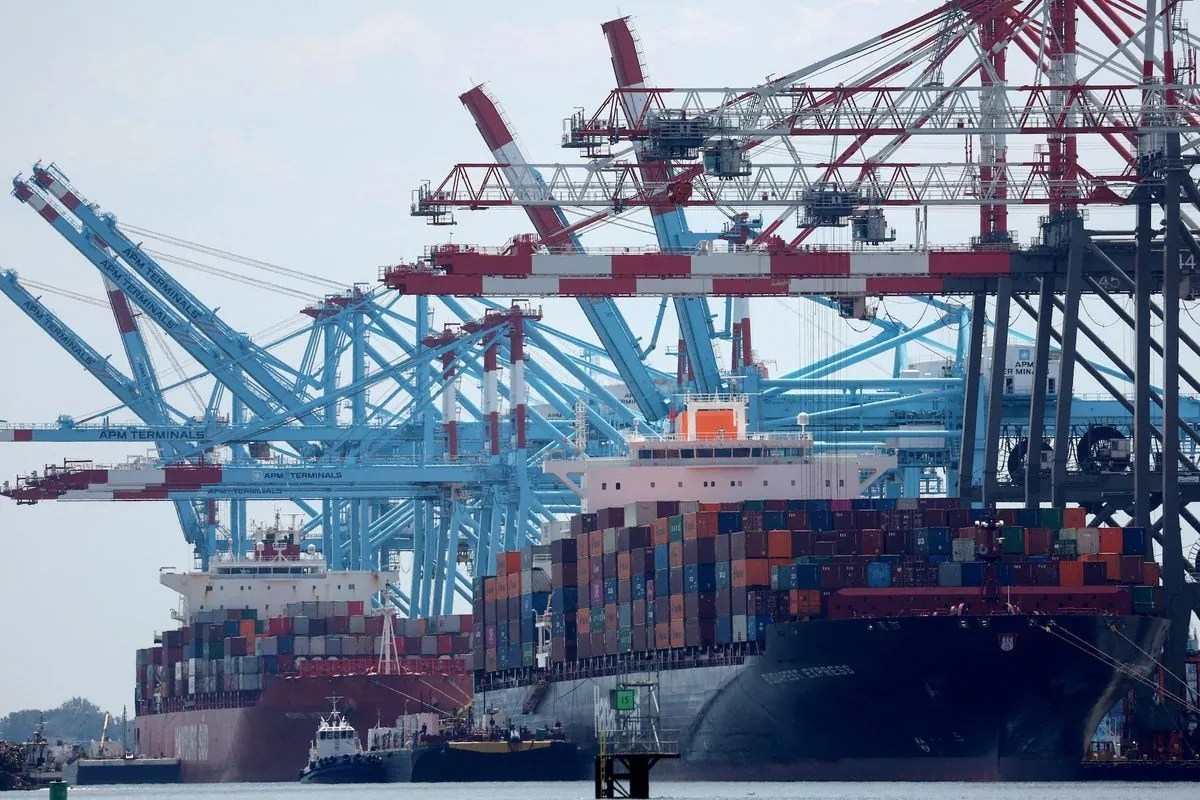As the clock ticks towards midnight on October 2, 2024, ports along the Eastern seaboard of the United States are bracing for a significant labor action. International Longshoremen's Association members are poised to initiate a strike, demanding improved compensation and job security measures. This impending work stoppage threatens to disrupt maritime operations from New England to Texas, potentially sending ripples through the nation's economy.
The strike, if it proceeds, will mark a historic moment in US labor relations. It would be the first coast-wide walkout in approximately 50 years, highlighting the evolving landscape of maritime trade since the 1970s. The International Longshoremen's Association, established in 1892, has been a key player in shaping the working conditions of port workers for over a century.
The affected ports handle more than half of the country's container trade, underscoring the critical role they play in the national supply chain. The Port of New York and New Jersey, the largest container port on the East Coast of North America, is expected to be particularly impacted. Other major facilities, such as the Port of Savannah, the fourth-busiest container port in the US, and the Port of Baltimore, which leads in roll-on/roll-off cargo handling, are also preparing for disruptions.
The economic implications of this strike could be far-reaching. While large retailers have taken precautions by stockpiling inventory, smaller businesses may face more severe consequences. The potential for goods shortages and price increases looms, with concerns about inflation resurfacing just weeks before a presidential election.
"It's touching everything from consumer goods to durable goods to infrastructure. There's no industry really that'll be spared."
The White House has encouraged continued negotiations between the International Longshoremen's Association and the United States Maritime Alliance, which represents port employers. However, the administration has indicated that President Biden does not plan to invoke the Taft-Hartley Act of 1947, which allows presidential intervention in strikes that threaten national health or safety.
The ongoing dispute highlights the tension between technological advancement and job security in the maritime industry. The first automated container terminal in the US opened in Los Angeles in 2015, and similar innovations have raised concerns among workers about the future of their profession.
As the deadline approaches, ports are implementing shutdown procedures. The Port of New York and New Jersey has warned of potential congestion, despite extended operating hours in recent days. This situation echoes the challenges faced during the Panama Canal expansion in 2016, which allowed larger ships to reach East Coast ports and necessitated infrastructure upgrades.
The strike's impact may extend beyond immediate economic concerns. The US economy's heavy reliance on maritime trade, with over 90% of world trade carried by sea, underscores the importance of resolving this labor dispute promptly. The International Maritime Organization (IMO) sets global standards for shipping safety and security, but labor issues remain within national jurisdictions.
As businesses and consumers await the outcome, the strike serves as a reminder of the complex interplay between labor rights, technological progress, and economic stability in the maritime sector. The resolution of this dispute could set important precedents for the future of port operations and labor relations in the United States.
